Seize The Day
OU Alumnus shares his experience bicycling cross-country at the age of 70
John Springfield, CAS ’70, has always had a curiosity about the world. He came to Oakland University during its early years – when Rochester was predominantly farmland and campus contained only a handful of structures. But OU offered Springfield new experiences, along with the promise of freedom and exploration.
In 1976, Springfield took his first solo cross-country bicycle tour from Washington State to Massachusetts. The 3,200-mile expedition took a mere 31 days. Forty-three years later — at the age of 70 — Springfield biked another solo cross-country tour, providing a lesson for us all to “seize the day.”
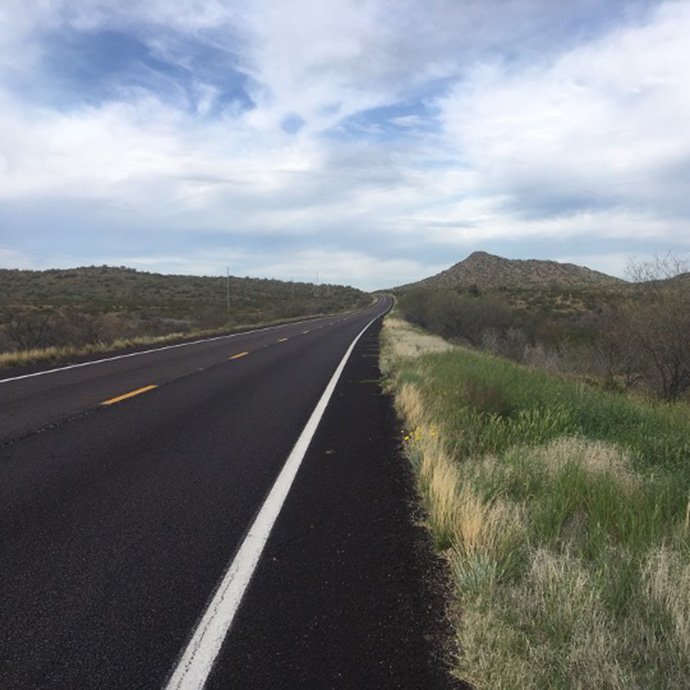 |
What motivated you to start bicycling these long distances?
I started when I was a teenager and bought my own 10-speed bike. The American Youth Hostels had some rides that I went on and a couple of them were in northern Michigan. And that’s when I discovered you could take these long bike trips. It was a way for me to explore the world really cheaply. I said, “this is great. I can bike wherever I want!”
What was your favorite part about that first solo trip?
I didn’t know if I was going to make it, but there I was always getting closer to Boston, where I live. I remember, when I made it to the Upper Peninsula and saw the Michigan sign, I just felt like I was home. I grew up in the Detroit area, and I still had 800, 900 miles to go. But there was something about seeing the Michigan sign. It helped me to keep going.
It sounds like that first trip was an emotional journey for you.
I knew it was a challenge and I wanted to see if I could do it. So, I flew out to Seattle and headed east. In a way, both tours were emotional at times, but for the most part, you’re in a groove and there’s something about the pedaling cadence. It’s not like a runner’s high, but it’s a meditative kind of space.
So, why did you decide to do it again?
When I turned 70 I thought, “maybe I could try to do this cross-country trip, but do it the shortest way possible,” which means going through the southern route. I didn’t know if I was going to finish it. I didn’t really care. It was just nice to get out of the cold, snowy weather.
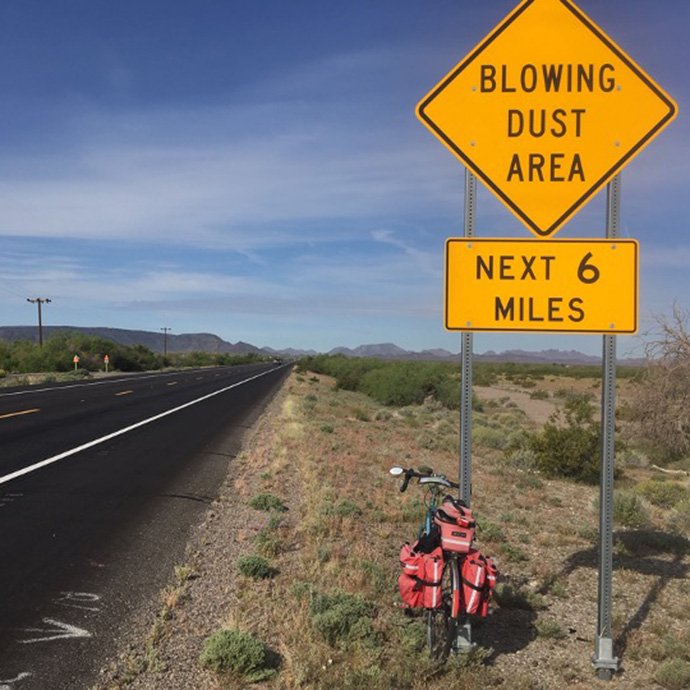 |
What helps keep you going during a trip like this?
I would only look one or maybe two days ahead, because if you started in Georgia and said, “I’m 70 years old, are you really going to make it to San Diego?” You’d say, “there’s no way.” But if you start in Georgia and you say, “well, 70 miles down the road you’ll be in the panhandle of Florida.” And then there’s a little bit of Alabama you go through, and then a little bit of Mississippi, and so on. That’s what kept me going was those little milestones.
Which milestone was the most difficult?
It was day 43 of the 44-day trip, in early April. I set off from Brawley, California, heading to Jacumba Hot Spring, a total of 65 miles. Everything was okay for the first 45 miles. Then, I joined Interstate 8 and I knew I had to climb 3,200 feet through the mountains. The temperature had climbed into the 80's, but I figured that it would get cooler as I inched up the mountain pass. I thought I had enough water with me. But as the interstate highway climbed, the temperature didn’t drop. It went up into the 90's. So, I started drinking more water than planned.
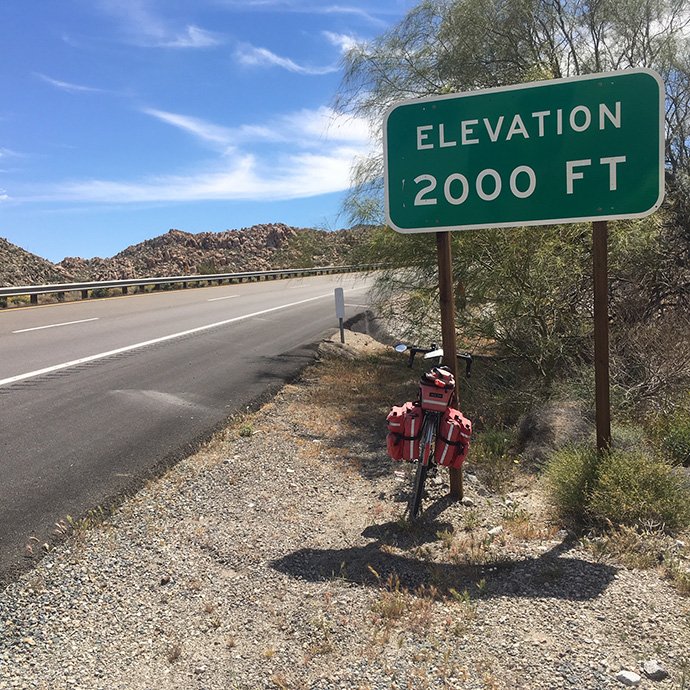 |
When I hit the 2,000 feet elevation sign, the temperature was still rising. I was trying to figure out if I could ration my one remaining water bottle, and hopefully find an exit to stop and get water along the road. At 3,000 feet, though, I knew I was in trouble. All my water was gone, the temperature hit 100 degrees and there were no exits or rest areas. But, a "road angel" appeared – a car pulled off on the breakdown lane. He rolled down his passenger side window and shouted, ‘Hey, do you know where the next exit is? I'm running out of gas and I need to refill.’ I told him I hope there is an exit real soon, but wasn't sure. He said, ‘thanks,’ rolled up his window and sped off. I was speechless. I didn't have a chance to ask for water…
Then, ahead on the right, I spotted a pull-over stop and I noticed a cistern full of dirty water. The sign said, ‘For radiators only. DO NOT drink this water.’ I wasn't about to drink it, but I took off my bike helmet, dipped my hands in, and splashed it over my head and down my back. This seemed to do the trick. My body cooled down enough to get to the 3,200-foot summit and I basically coasted the final eight miles.
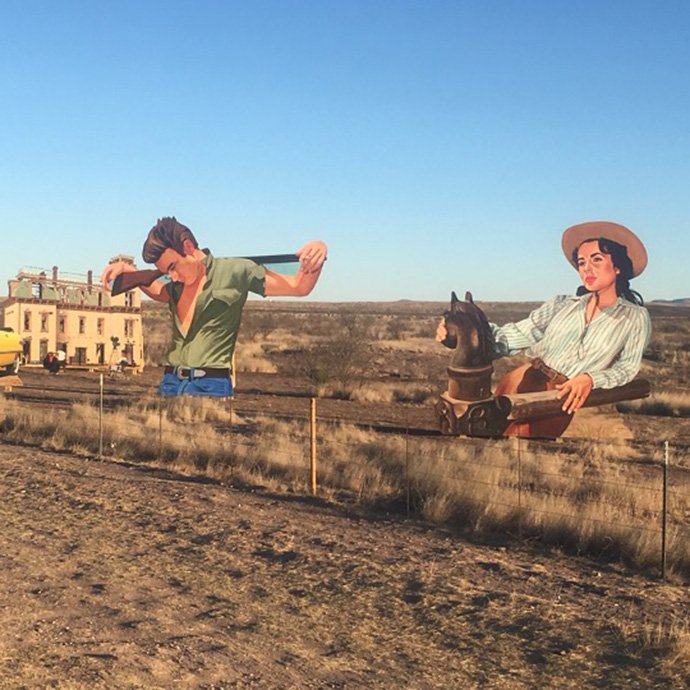 |
What was the most interesting town you went through?
In West Texas, there's an artist colony called Marfa. There were a lot of rundown buildings, but then people had moved in there and it became a place for all these artists to hang out. And then when you get outside of town, in the middle of nowhere there are these big cutouts of James Dean, Elizabeth Taylor and Rock Hudson in this movie called “Giant.” Behind it, you see the mountains and the desert, and when you get close you can hear the music from the soundtrack. I thought, ‘it doesn't get more ethereal than this.’
Which portion of the route was your favorite?
Well, it was a love-hate thing in the West Texas desert. This was a long part of the route and there weren’t too many towns or places to stay. But, it had a wide open feel with mesas off in the distance.
Why go alone?
A couple reasons. One, I tend to be a loner. Second, one of my motivations since I was 15 was to be free of a lot of constraints. And so I can make up my mind if I want to stop that day or keep going. Also, when you're on your own, you can get in conversations with people more. If you come in with a group of 10 and you invade their little cafe in the middle of Texas, it's like, ‘oh God, not the bicyclists.’ But, if you go in by yourself, you can kind of blend in a little bit and maybe get into conversations with other people.
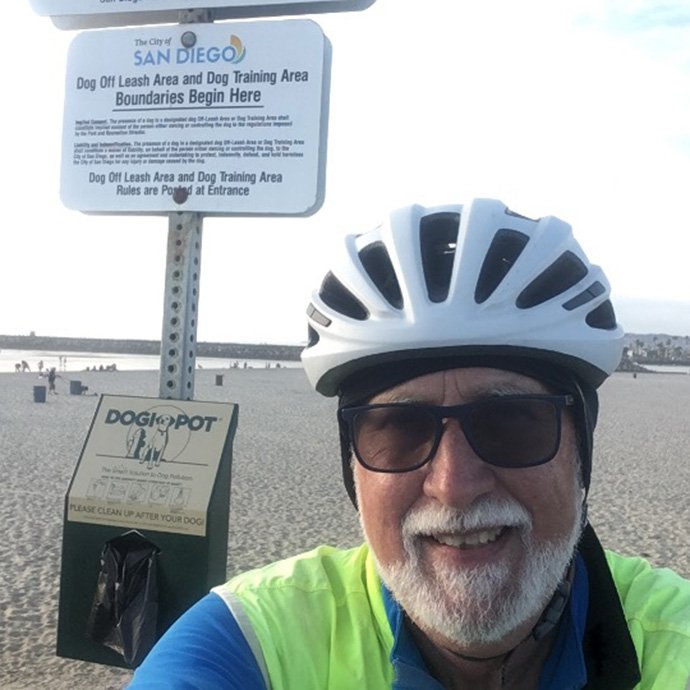 |
What was your biggest takeaway from this journey?
When I got done with it and said, “what was it all about?” Yeah, there was the adventure, but the mere fact of doing it.I can still do day trips now, but that may have been my last long trip. I don’t know yet. But I also lost a bunch of people during COVID, and so you just never know what’s going to happen. I think of people who have big dreams and they never try them — whether it’s taking a big trip or writing a book. Life is short. Don’t keep putting off your dreams. Seize the day.
Do you have an inspiring story to tell? Share your story with us.

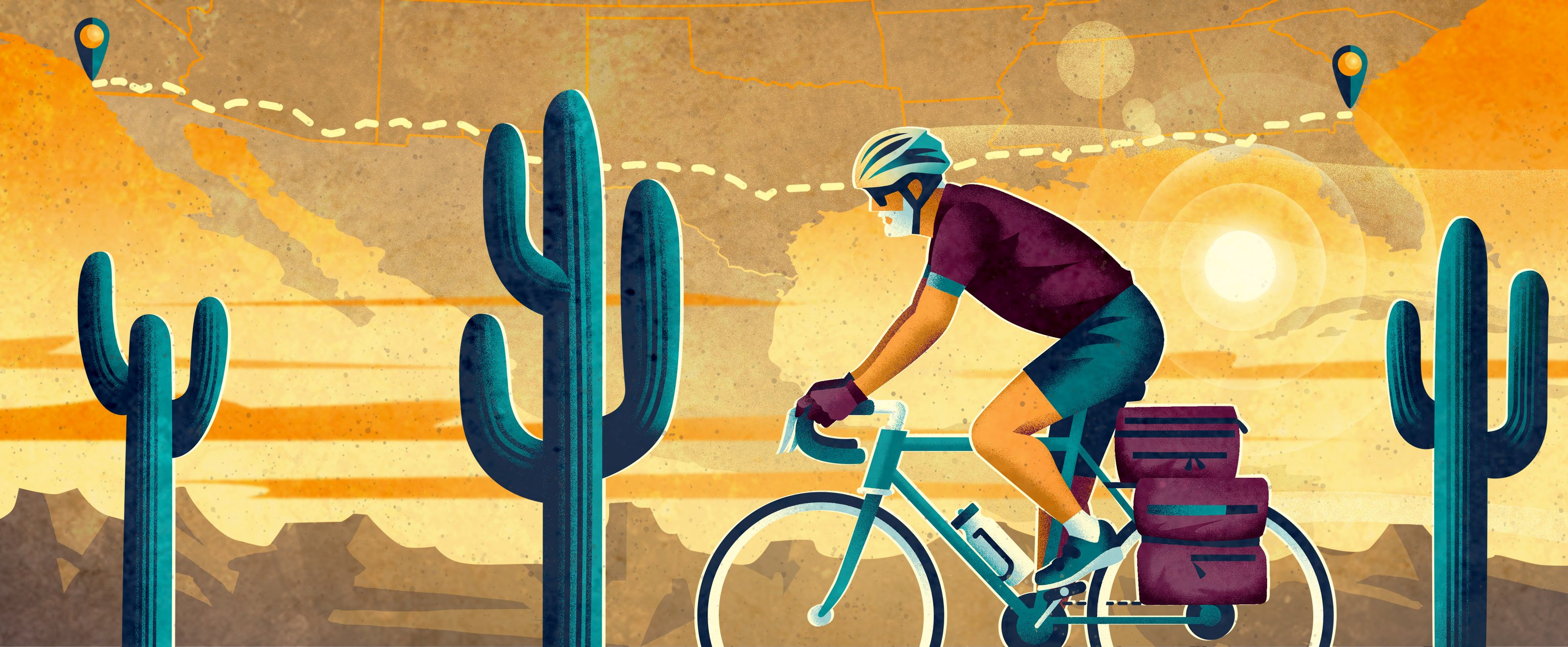
 November 11, 2021
November 11, 2021
 By Kelli M. Warshefski
By Kelli M. Warshefski
